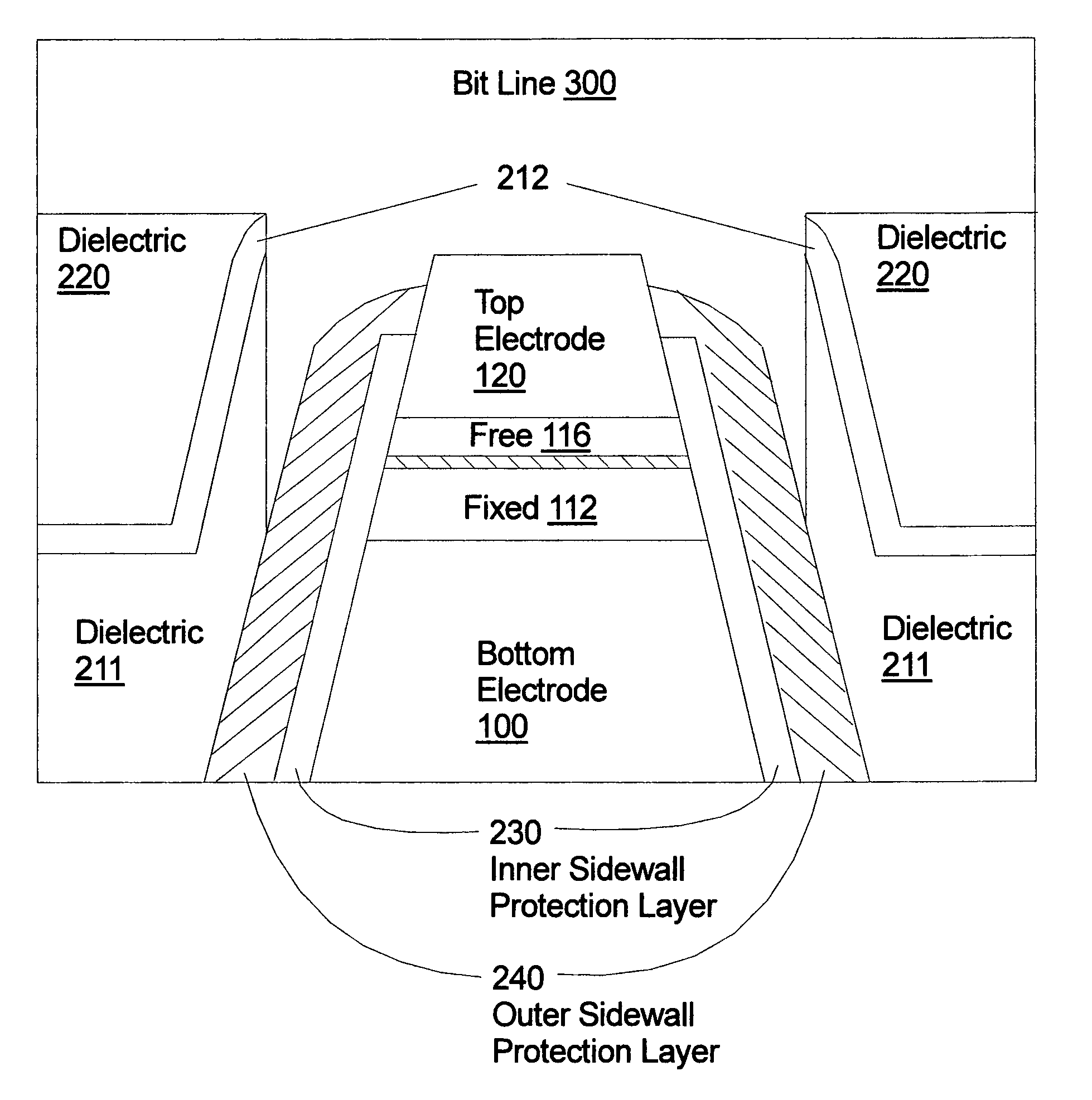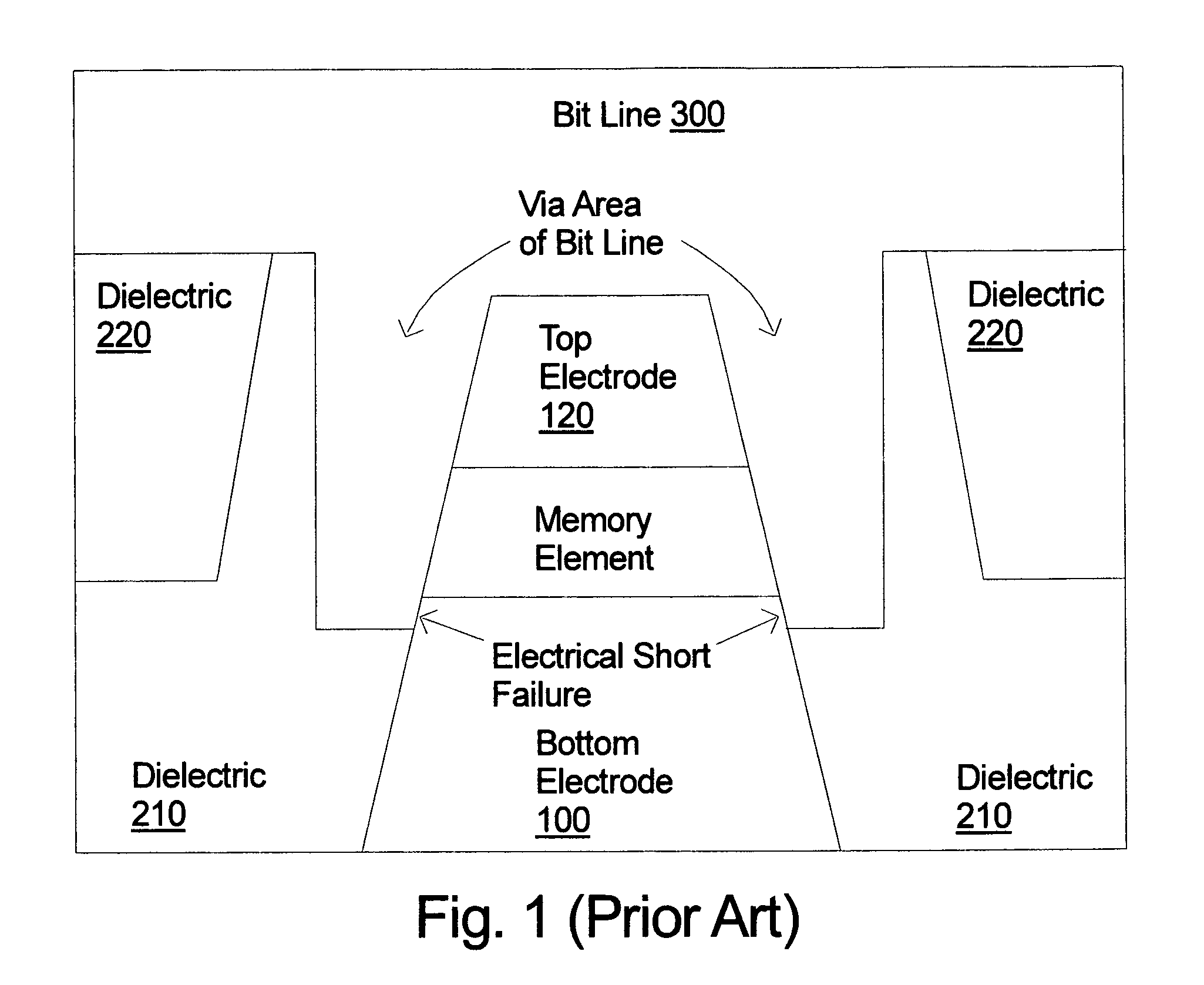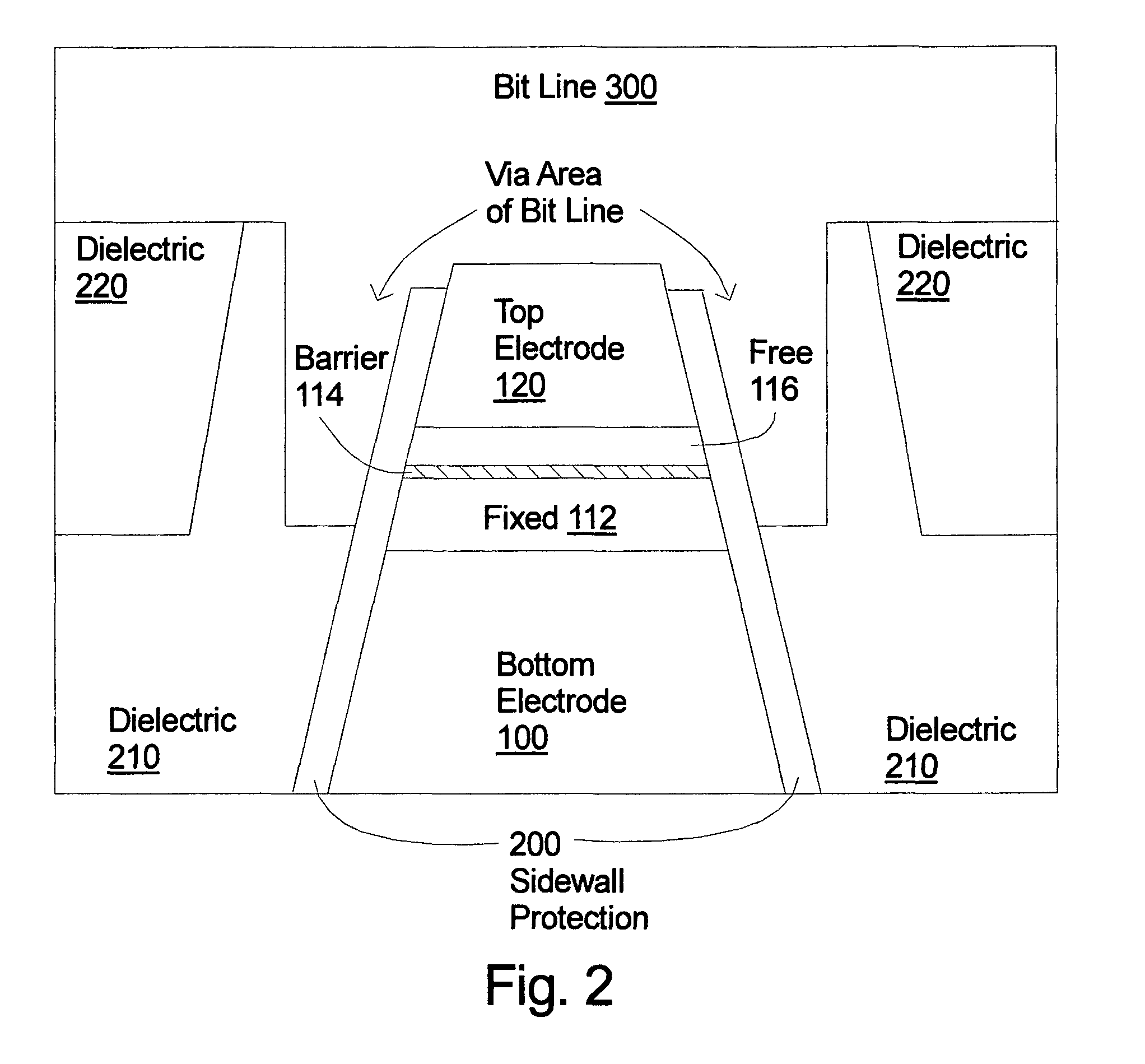MRAM with sidewall protection and method of fabrication
a sidewall protection and memory technology, applied in the field of magnetic random access memory (mram), can solve the problems of destroying the functionality of the device, electrical short, and formation of electrical short between the top and bottom electrodes during fabrication, and achieve the effect of high selectivity
- Summary
- Abstract
- Description
- Claims
- Application Information
AI Technical Summary
Benefits of technology
Problems solved by technology
Method used
Image
Examples
Embodiment Construction
[0020]In the following description of the embodiments, reference is made to the accompanying drawings that form a part hereof, and in which is shown by way of illustration of specific embodiments in which the invention may be practiced. It is to be understood that other embodiments may be utilized without departing from the scope of the present invention. It should be noted that the figures discussed herein are not drawn to scale and thicknesses of lines are not indicative of actual sizes. The cross section view in the figures is generally taken through the approximate center the memory cell in a plane perpendicular to the substrate except where otherwise noted. Although only one cell is shown in the figures, the method may used for the simultaneous fabrication of a many cells on a wafer according to standard techniques.
[0021]FIG. 2 illustrates a cross sectional view of a completed memory cell according to a first embodiment of the invention wherein the sidewalls of the memory eleme...
PUM
 Login to View More
Login to View More Abstract
Description
Claims
Application Information
 Login to View More
Login to View More - R&D
- Intellectual Property
- Life Sciences
- Materials
- Tech Scout
- Unparalleled Data Quality
- Higher Quality Content
- 60% Fewer Hallucinations
Browse by: Latest US Patents, China's latest patents, Technical Efficacy Thesaurus, Application Domain, Technology Topic, Popular Technical Reports.
© 2025 PatSnap. All rights reserved.Legal|Privacy policy|Modern Slavery Act Transparency Statement|Sitemap|About US| Contact US: help@patsnap.com



